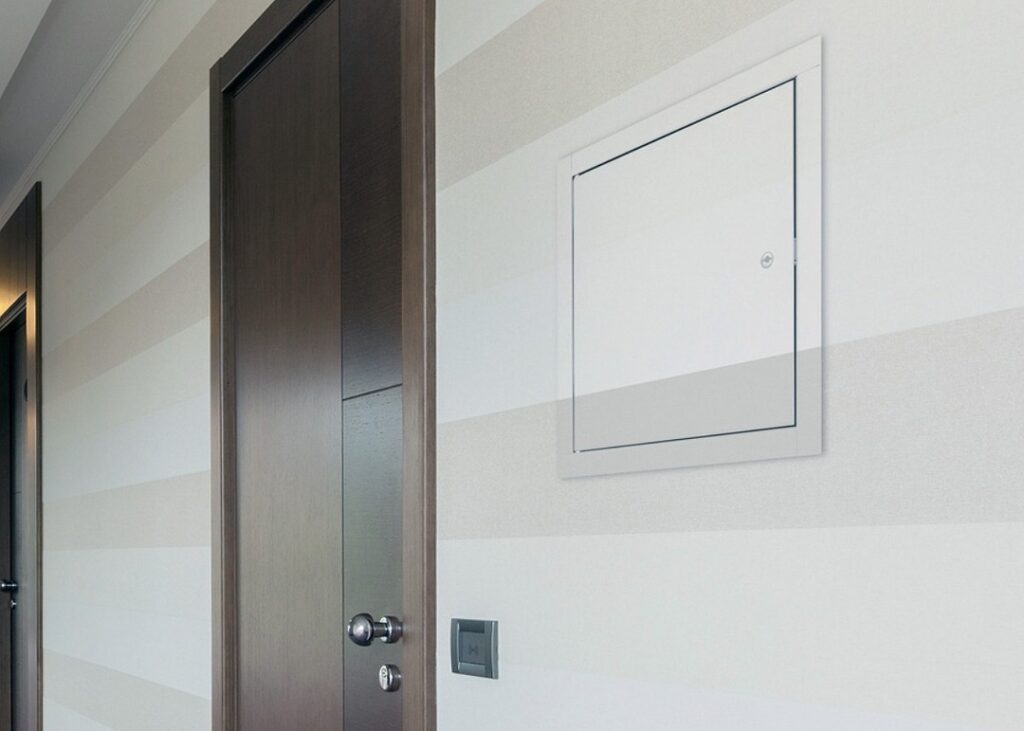Did you know that over 5,486 workplace fatalities were reported in the construction in 2022 alone? Many of these tragic incidents were linked to falls and insufficient safety features in building designs, according to OSHA.
Creating a safe and efficient building starts with thoughtful planning and attention to detail. Sometimes, the smallest elements—like access doors— can be a game-changer – in safety and functionality.
In this article, we’ll explore how access doors improve buildings and why they’re a valuable addition to any space.
The Importance of Safety in Modern Buildings
Safety is a top priority in modern building design. With stricter regulations and higher expectations, every detail must work together to protect people and property. Creating a safe building involves planning for potential risks and incorporating features that prevent accidents.
Here are a few key safety measures that make a real difference:
Fire Safety: Professional fire alarm services and Fire-resistant walls and systems are crucial for preventing fires from spreading. They protect vital areas and help people exit the building safely during emergencies.
Fall Prevention: Secure access points are essential in high-risk areas like rooftops and maintenance zones. Safety rails and non-slip surfaces help prevent falls and keep workers safe in these spaces.
Controlled Access: Some rooms, like those with electrical panels or HVAC systems, must remain off-limits to unauthorized personnel. Securing these areas helps protect sensitive equipment and ensures the safety of the people in the building.
What Are Access Doors?
Access doors are specially designed doors that provide easy entry to hidden spaces, including attics, crawl spaces, maintenance rooms, or plumbing, electrical, and HVAC systems.
These components, including a roof hatch, ensure quick and safe access for maintenance, repairs, and inspections.
There are several types of access doors, each tailored for different needs:
Fire-Rated Access Doors: These doors help slow fire spread and protect important areas, such as electrical rooms, from fire damage.
Flush Access Doors: Designed to sit flush with the surrounding wall or ceiling, flush access doors blend seamlessly into the building’s design. They provide a clean, smooth look while offering access when needed.
Insulated Access Doors: These doors help maintain temperature control by preventing heat loss or gain, making them great for areas where energy efficiency is important.
Security Access Doors: They are stronger and often lock securely to keep unauthorized people out.
How Access Doors Help Create Safer, More Efficient Buildings
Here’s how the right access door can make a real difference in your building:
Improved Fire Safety: As said, fire-rated access doors areessential for delaying the spread of fire for a certain period, allowing for faster evacuations and reducing property damage.
Enhanced Security: Access doors control entry into sensitive areas such as mechanical rooms or server spaces. Theyguarantee that only authorized people can access important equipment, helping prevent theft or tampering.
Eco-Friendly: Insulated access doors help maintain the building’s temperature, lowering energy costs and improving overall energy efficiency.
Space Maximization: In modern designs, access doors provide hidden storage or equipment access while keeping spaces clean and open. Flush or recessed access doors blend seamlessly into the design, offering a sleek, unobtrusive look that promotes better space utilization.
Access Door Applications in Buildings
Access doors are simple but important features in any building. Here are some practical ways access doors are used in buildings:
Rooftop Access
Rooftop access doors are vital for maintaining and managing rooftop gardens. Whether checking or fixing air conditioning units, repairing leaks, or cleaning after a storm, they offer a safe way to reach the roof.
With more buildings utilizing rooftop spaces for green areas, like gardens or small farms, access doors allow building staff to care for these spaces by making regular tasks—such as watering or trimming—easy and efficient.
Emergency Exits
Access doors to fire escapes and stairwells are crucial in emergencies. These doors allow quick evacuations during fires or other urgent situations, providing a fast exit. They’re strategically placed in high-traffic areas, like hallways or near staircases, and are designed to meet safety codes to ensure they’re easy to open and reliable.
Equipment Access
Access doors allow maintenance teams to perform repairs or replacements without disrupting the rest of the building.
For example, if there’s an issue with plumbing or electrical systems, access doors enable quick entry to fix the problem, saving time, minimizing disruptions, and keeping everything running smoothly.
Solar Panel Installation
As more buildings adopt solar energy, rooftop access doors are essential for solar panel installation and upkeep. They provide safe, easy access to the roof for easy inspection or repair.
Seamless Design Integration
Most access doors can blend seamlessly into a building’s design. Many modern buildings use flush or recessed access doors that integrate with walls, ceilings, or floors, making them nearly invisible. This is especially useful in spaces like offices or homes where aesthetics matter.
Conclusion
Access doors are more than just practical features—they help make buildings safer and more efficient. Whether they improve fire safety, make maintenance easier, or blend into the design, access doors play a role in keeping everything running smoothly.

